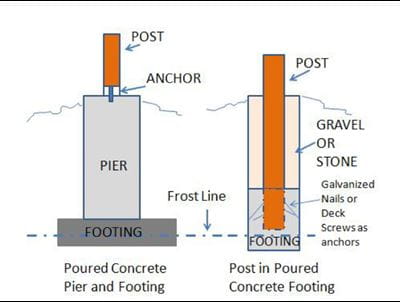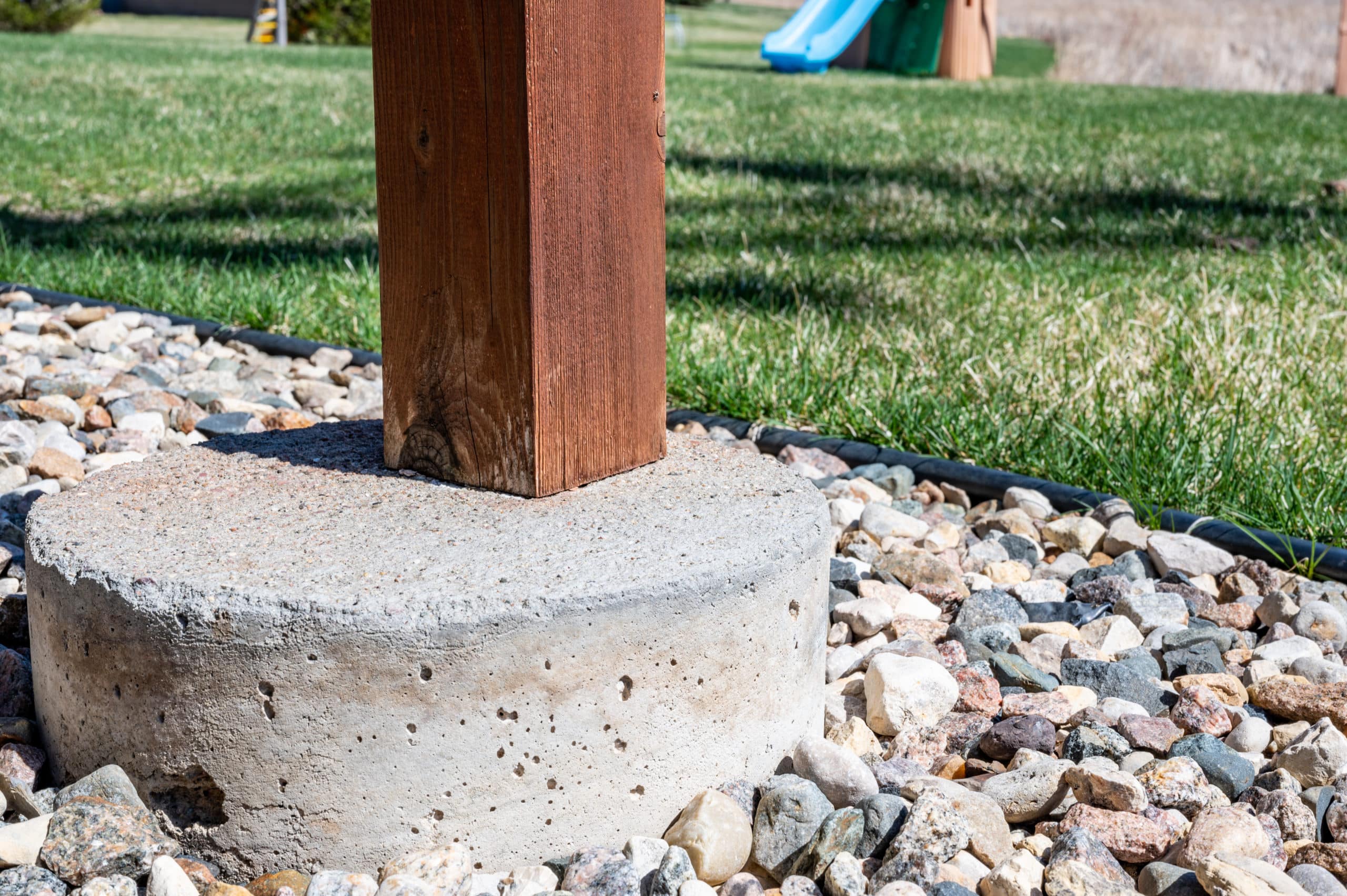Deck Footings 101: Structure a Strong and Secure Exterior Oasis
Wiki Article
Vital Tips for Solid Deck Ground: A Comprehensive Guide
Constructing a deck is a financial investment that needs mindful planning and attention to detail, especially when it comes to the ground. This overview will cover important elements such as choosing the right materials, assessing dirt problems, calculating tons capacity, establishing proper footing depth, and accomplishing precise installation. Allow's dive right into the globe of strong deck ground and develop a structure you can count on.Selecting the Right Deck Footing Products
When choosing the best deck footing products, it is vital to consider the particular requirements and needs of your task. The quality and durability of the grounds straight affect the stability and durability of the deck structure. There are numerous aspects to think about when picking deck ground materials.One important consideration is the sort of dirt in your location. Various dirt kinds have varying load-bearing capacities and drain properties. As an example, clay dirts have a tendency to retain water, while sandy soils drain quickly. Recognizing your soil problems will certainly aid you choose footings that can effectively support the weight of the deck and stop issues such as heaving or sinking.
Severe temperature levels, dampness degrees, and freeze-thaw cycles can affect the performance of deck grounds. In such instances, making use of frost-resistant materials or setting up grounds below the frost line can help mitigate these threats.
In addition, the dimension and style of your deck ought to additionally influence your option of footing materials. Larger or even more complex decks might need deeper or reinforced footings to make certain sufficient assistance. Comprehending the specific tons needs of your deck will certainly aid you establish the suitable products to use.
Eventually, picking the right deck footing products involves mindful factor to consider of elements such as dirt problems, environment, and deck layout. By taking these elements right into account, you can pick grounds that offer the needed assistance, boost the stability of your deck, and ensure its longevity.
Appropriately Assessing Soil Conditions
To appropriately analyze soil problems for your deck footing, it is crucial to thoroughly evaluate the load-bearing abilities and water drainage properties of the soil in your location. Recognizing the soil's capability to birth weight and its ability to drain excess water will aid make sure the security and durability of your deck.When evaluating the load-bearing capability of the soil, it is essential to think about variables such as soil kind, compaction, and density. Various soil types have differing load-bearing abilities, with compressed dirts normally using much better assistance than loosened or sandy dirts. Performing a dirt examination can provide beneficial information about the dirt's capability to support the weight of your deck.
Additionally, evaluating the water drainage residential or commercial properties of the soil is necessary to stop water build-up and potential damages to your deck - Deck Footings. Poor drain can result in moisture buildup, which can deteriorate the structure and trigger architectural problems. It is important to analyze the dirt's ability to drain pipes water successfully to prevent these issues
Consulting with an expert engineer or dirt professional can considerably assist in effectively examining soil conditions for your deck footing. They can give expert recommendations and assistance, making certain that you choose the appropriate ground layout and materials based on the certain attributes of the soil in your location. Taking the time to completely analyze soil problems will certainly aid you develop a resilient and strong deck.
Calculating Tons Capability for Grounds
One essential action in guaranteeing the stability of your deck is to accurately calculate the lots capacity for your footings. Deck Footings. The lots capability describes the maximum quantity of weight or tons that the grounds can safely sustain without triggering any architectural damages or failure. Computing the tons capability for grounds involves thinking about numerous factors such as the size and sort of footings, the kind of soil, the measurements and weight of the deck, and the real-time tons and dead lots that the deck will be subjected toTo determine the lots ability, it is essential to seek advice from neighborhood structure codes and guidelines as they give specific guidelines and requirements for deck building. These codes think about variables such as dirt bearing ability, frost deepness, and minimal footing measurements. Furthermore, it is critical to involve the solutions of a professional specialist or a structural engineer who can carry out the required computations and evaluations to guarantee the safety and stability of the deck.
When computing the load ability, it is important to precisely identify the live load and dead lots that the deck will certainly experience. The online load refers to the weight of individuals, furnishings, and any type of other items that will certainly be positioned on the deck, while the dead tons refers to the weight of the deck itself. By properly establishing these lots and considering all pertinent aspects, you can make sure that your footings are properly designed to sustain the weight and preserve the stability of Check Out Your URL your deck.
Making Sure Appropriate Footing Deepness
Correct footing deepness is vital for guaranteeing the security and durability of your deck. The depth at which the grounds are installed straight influences the structural honesty of the deck, as it figures out how well the grounds can resist the pressures exerted by the deck and the dirt below it.When establishing the proper footing deepness, several aspects should be taken into consideration. These include the kind of soil, the regional climate, and the lots capacity needed for the deck. Generally, grounds should be put listed below the frost line to avoid any kind of heaving or shifting because of freezing and thawing cycles. In locations with expansive clay soil, much deeper grounds may be needed to provide sufficient assistance.
To determine the appropriate ground deepness, Check This Out it is suggested to seek advice from an architectural engineer or structure assessor that can assess the particular problems of your website and give guidance based on regional building regulations and policies. They will certainly take into consideration elements such as soil structure, aquifer degree, and anticipated lots to determine the minimum required footing depth.
Installing Footings With Accuracy
Mounting grounds with precision is vital for guaranteeing the stability and architectural honesty of your deck. Effectively mounted footings offer a solid structure, making sure that your deck can stand up to the weight of furniture, individuals, and various other tons. To install grounds with accuracy, there are a number of key actions to comply with.First of all, it is important to properly note the location of each ground. This can be done by utilizing a string or chalk line to create a clear outline. By gauging and marking the exact placements, you can guarantee that the footings are equally spaced and lined up.
Next, you require to dig the holes for the her comment is here grounds. It is essential to dig them to the correct deepness and diameter, as defined by local building ordinance and regulations. This will certainly offer adequate assistance and prevent the deck from sinking or shifting in time.
As soon as the holes are dug, it is necessary to level and portable the soil at the base of each hole. This will certainly create a steady base for the ground to rest on and protect against any type of settling or activity.
After preparing the holes, you can proceed with putting the concrete. Use a concrete mix that appropriates for footings and comply with the maker's instructions for blending and pouring. Make certain that the concrete fills the holes entirely and is degree with the ground surface.
Last but not least, permit the concrete to heal appropriately prior to waging the building and construction of your deck. This will guarantee that the footings are solid and steady, giving a safe and secure foundation for your deck.

Verdict
To conclude, guaranteeing solid deck footing is essential for the stability and longevity of a deck framework. By picking the ideal ground materials, assessing dirt problems, determining tons capacity, and installing grounds with accuracy, the danger of structural failing can be reduced. Following these vital suggestions will aid develop a solid structure for any kind of deck job.Understanding your dirt problems will help you select footings that can efficiently sustain the weight of the deck and protect against problems such as heaving or sinking.
Consulting with an expert engineer or dirt professional can significantly aid in appropriately evaluating soil problems for your deck footing. Computing the load capacity for grounds includes considering numerous elements such as the dimension and type of grounds, the type of dirt, the dimensions and weight of the deck, and the real-time load and dead lots that the deck will certainly be subjected to.

Report this wiki page